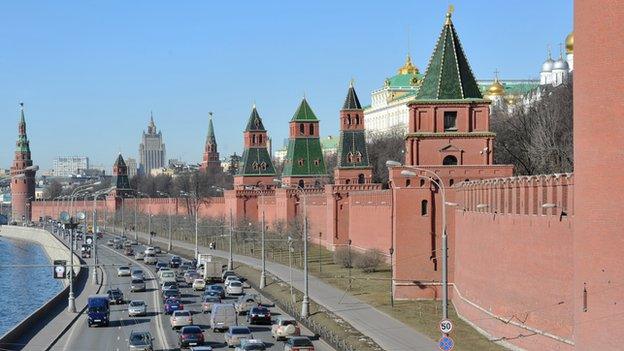Estonia President Toomas Ilves seeks permanent Nato force
- Published
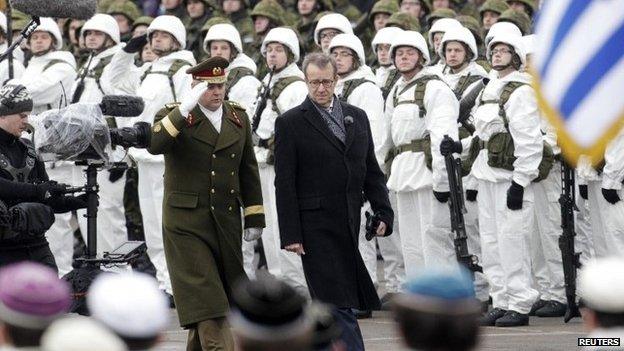
Mr Ilves said Russia could take over Estonia before a Nato rapid response force could be deployed
Estonian President Toomas Ilves has called for a permanent Nato force to be stationed in his country.
Mr Ilves told the UK's Daily Telegraph newspaper, external that Estonia felt threatened by Russian military flights and exercises in the area, as well as by belligerent rhetoric from Moscow.
Currently the sole Nato contingent in Estonia is a 150-strong US infantry company, stationed temporarily.
Nato has pledged a 5,000-strong task force to defend vulnerable members.
According to Nato's founding charter, if a member country of the alliance is attacked every other member would be obliged to go to war in its defence.
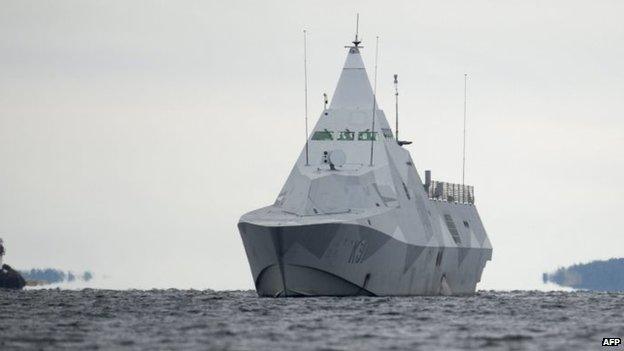
Last October the Swedish navy launched an intense search for a Russian submarine which it said had got into trouble off the Swedish coast
But the 1997 Nato-Russia Founding Act, external forbids the presence of permanent bases in eastern and central Europe.
The Russian government meanwhile has said that it is concerned over moves by Finland and Sweden towards closer ties with the Nato.
Nordic defence ministers - also including Norway, Denmark and Iceland - agreed on Friday that Russia's recent behaviour was the gravest challenge to European security and that northern Europe must be prepared for a possible crisis.
But in a statement, the Russian foreign ministry warned that this could undermine co-operation in the region that had been developed over several decades.
Finland - which borders Russia - and Sweden are not Nato members but have increased co-operation with the alliance.
'Four hours'
Mr Ilves told the newspaper that it was time for Nato to recognise that the security environment had changed since 1997 and that a brigade at the very least should be stationed in Estonia.
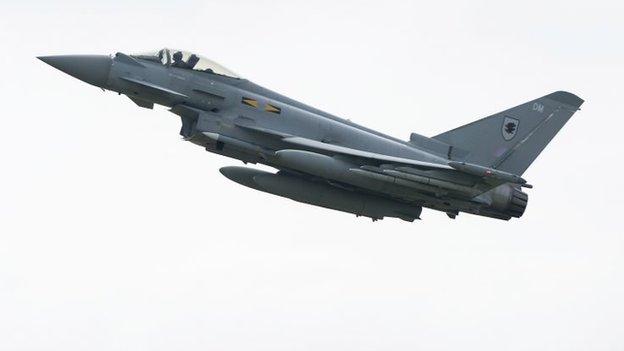
Britain last year deployed four Typhoon aircraft for exercises above Estonia, Latvia and Lithuania - Estonia says that it continues to feel threatened by Russian air power
"One hundred and fifty soldiers is not a lot, so we do think that further stationing of troops at a higher number is only reasonable," he said.
"We get exercises [by Russia] that take place behind our borders that have 40,000 to 80,000 soldiers. Yet we are accused of escalating the situation... and Russia says that it will have to take counter-measures."
The Estonian president suggested that Russian troops could reach the Estonian capital Tallinn - just 218km (135 miles) from the Russian border at Narva - in just four hours.
Nato has said that a 5,000-strong rapid response force, pledged at the alliance's summit in Wales last September, could be deployed within 48 hours to protect Eastern European members in the event of Russian aggression.
"It's a great idea but it probably is, in terms of the realities, just too late," said Mr Ilves.
Estonia has a standing army of just 5,300 troops and relies on Nato to police its airspace.
In early 2014 Nato quadrupled its policing mission, external over the Baltic states from four to 16 fighter jets, a tiny fraction of Russia's combat aircraft numbers.
- Published8 September 2014
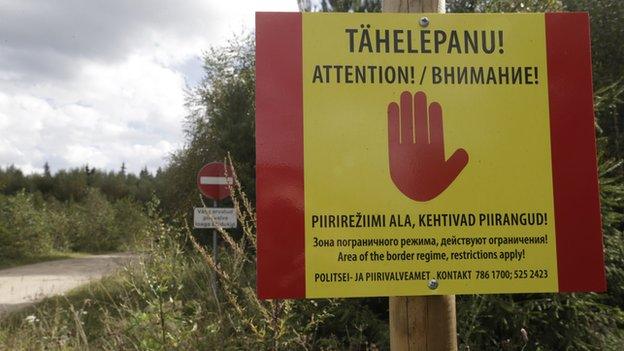
- Published5 September 2014
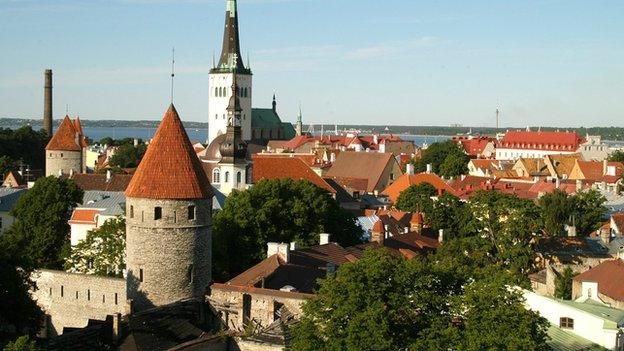
- Published3 September 2014
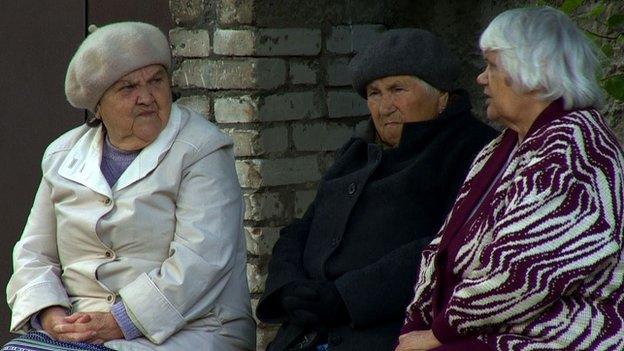
- Published3 September 2014
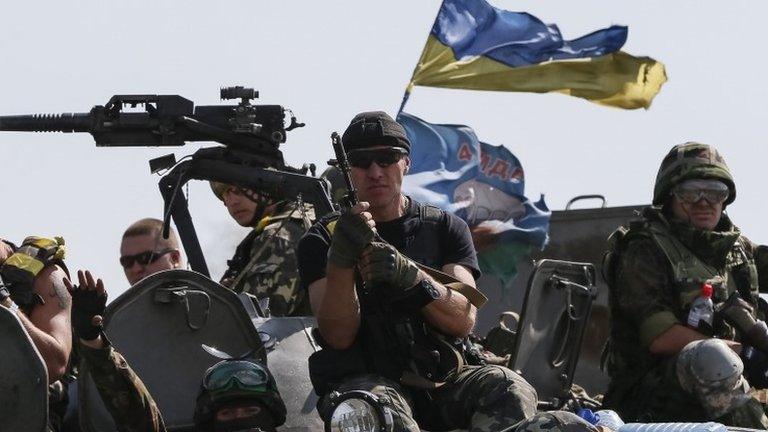
- Published23 July 2024
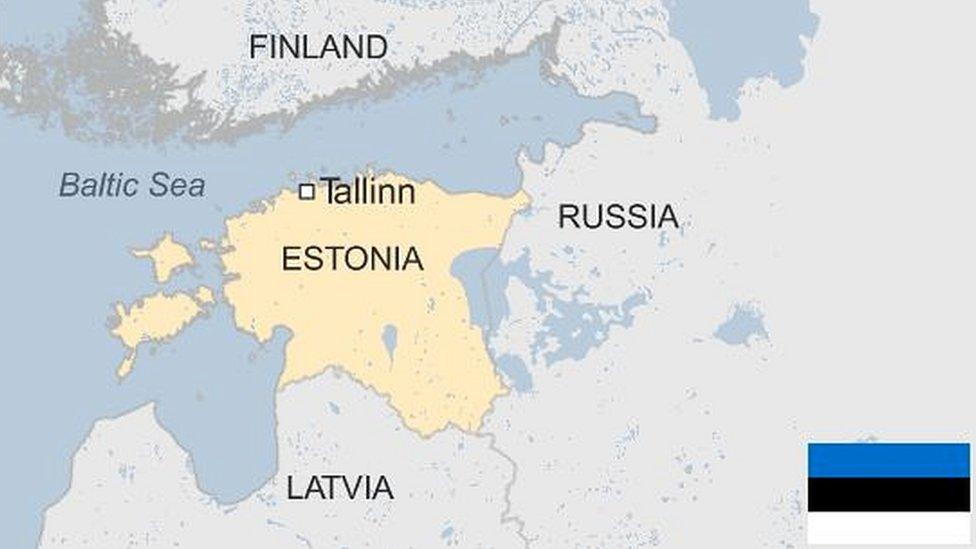
- Published5 September 2014
